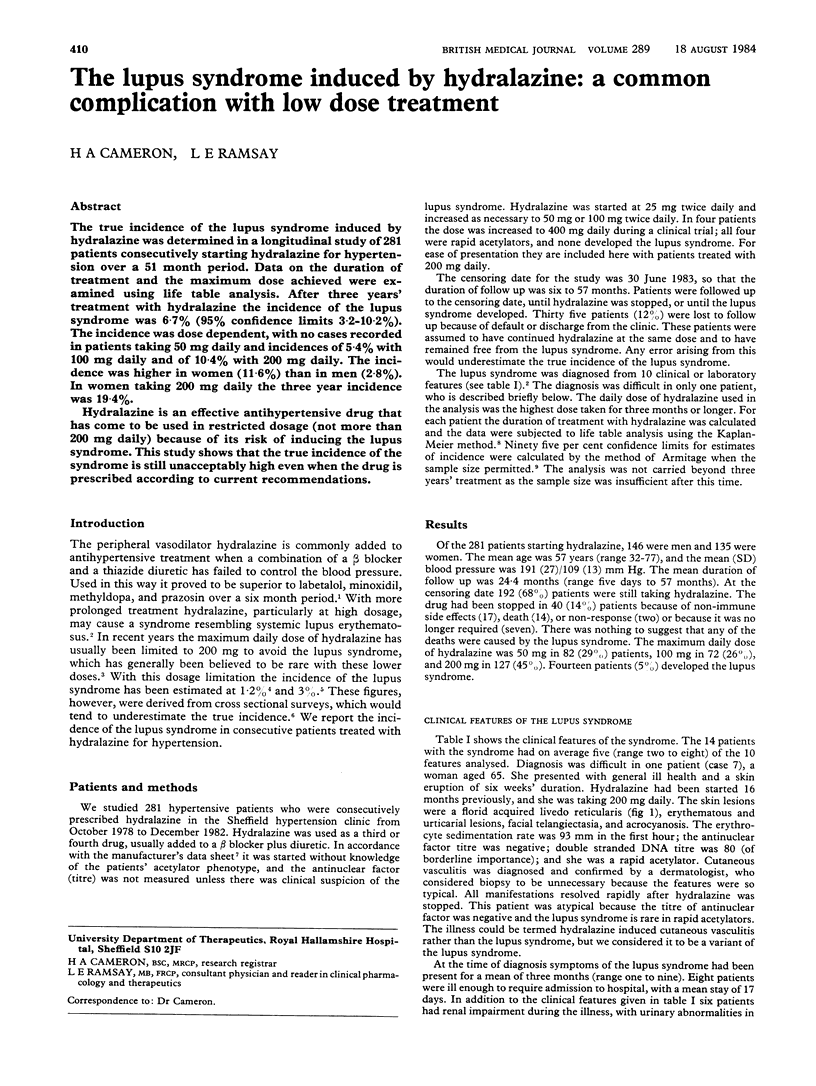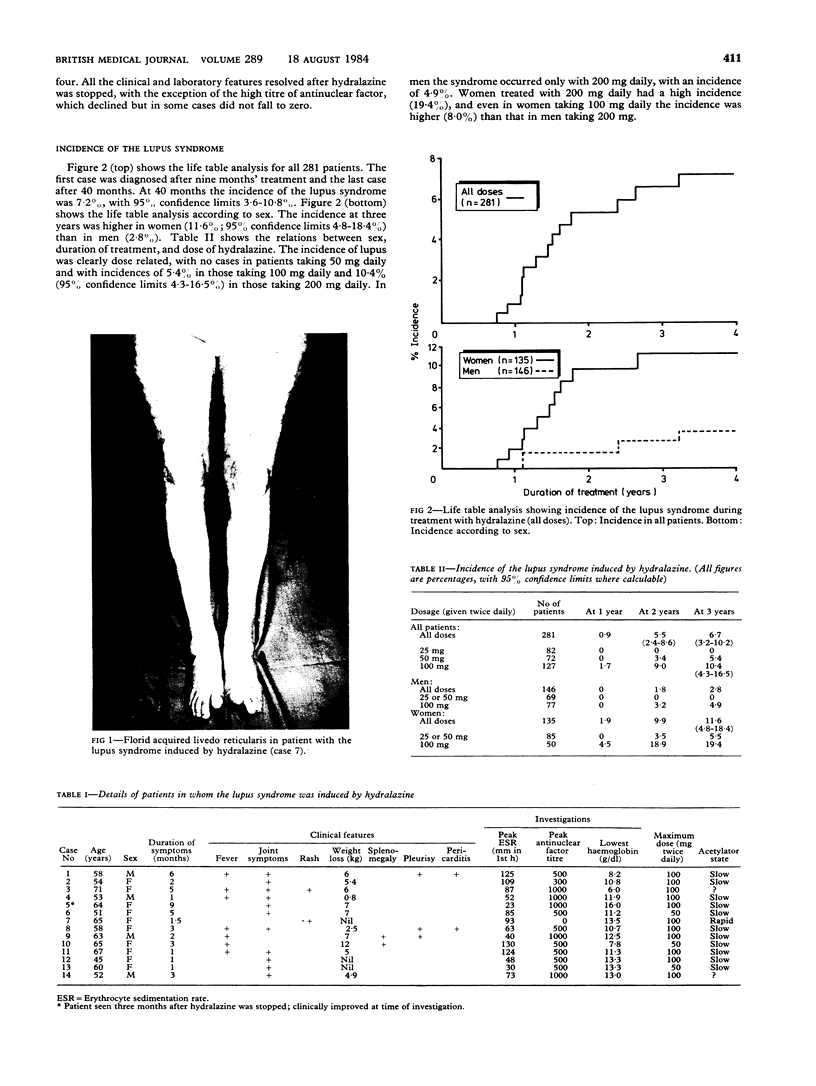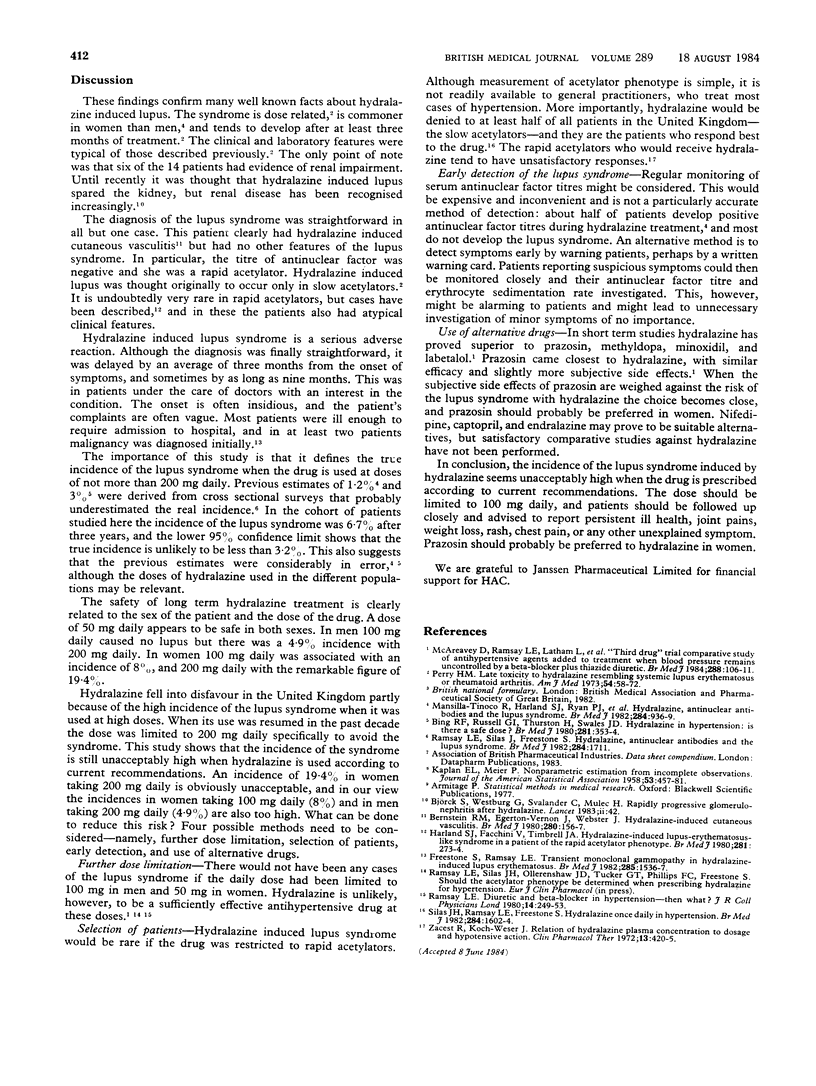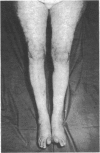Abstract
The true incidence of the lupus syndrome induced by hydralazine was determined in a longitudinal study of 281 patients consecutively starting hydralazine for hypertension over a 51 month period. Data on the duration of treatment and the maximum dose achieved were examined using life table analysis. After three years' treatment with hydralazine the incidence of the lupus syndrome was 6.7% (95% confidence limits 3.2-10.2%). The incidence was dose dependent, with no cases recorded in patients taking 50 mg daily and incidences of 5.4% with 100 mg daily and of 10.4% with 200 mg daily. The incidence was higher in women (11.6%) than in men (2.8%). In women taking 200 mg daily the three year incidence was 19.4%. Hydralazine is an effective antihypertensive drug that has come to be used in restricted dosage (not more than 200 mg daily) because of its risk of inducing the lupus syndrome. This study shows that the true incidence of the syndrome is still unacceptably high even when the drug is prescribed according to current recommendations.
Full text
PDF


Images in this article
Selected References
These references are in PubMed. This may not be the complete list of references from this article.
- Bernstein R. M., Egerton-Vernon J., Webster J. Hydrallazine-induced cutaneous vasculitis. Br Med J. 1980 Jan 19;280(6208):156–157. doi: 10.1136/bmj.280.6208.156-a. [DOI] [PMC free article] [PubMed] [Google Scholar]
- Bing R. F., Russell G. I., Thurston H., Swales J. D. Hydrallazine in hypertension: is there a safe dose? Br Med J. 1980 Aug 2;281(6236):353–354. doi: 10.1136/bmj.281.6236.353. [DOI] [PMC free article] [PubMed] [Google Scholar]
- Freestone S., Ramsay L. E. Transient monoclonal gammopathy in hydralazine-induced lupus erythematosus. Br Med J (Clin Res Ed) 1982 Nov 27;285(6354):1536–1537. doi: 10.1136/bmj.285.6354.1536. [DOI] [PMC free article] [PubMed] [Google Scholar]
- Harland S. J., Facchini V., Timbrell J. A. Hydrallazine-induced lupus erythematosus-like syndrome in a patient of the rapid acetylator phenotype. Br Med J. 1980 Jul 26;281(6235):273–274. doi: 10.1136/bmj.281.6235.273-a. [DOI] [PMC free article] [PubMed] [Google Scholar]
- Mansilla-Tinoco R., Harland S. J., Ryan P. J., Bernstein R. M., Dollery C. T., Hughes G. R., Bulpitt C. J., Morgan A., Jones J. M. Hydralazine, antinuclear antibodies, and the lupus syndrome. Br Med J (Clin Res Ed) 1982 Mar 27;284(6320):936–939. doi: 10.1136/bmj.284.6320.936. [DOI] [PMC free article] [PubMed] [Google Scholar]
- Perry H. M., Jr Late toxicity to hydralazine resembling systemic lupus erythematosus or rheumatoid arthritis. Am J Med. 1973 Jan;54(1):58–72. doi: 10.1016/0002-9343(73)90084-3. [DOI] [PubMed] [Google Scholar]
- Ramsay L. E. Diuretic and beta-blocker in hypertension--then what? J R Coll Physicians Lond. 1980 Oct;14(4):249–253. [PMC free article] [PubMed] [Google Scholar]
- Ramsay L. E., Silas J., Freestone S. Hydralazine antinuclear antibodies and the lupus syndrome. Br Med J (Clin Res Ed) 1982 Jun 5;284(6330):1711–1711. doi: 10.1136/bmj.284.6330.1711-a. [DOI] [PMC free article] [PubMed] [Google Scholar]
- Silas J. H., Ramsay L. E., Freestone S. Hydralazine once daily in hypertension. Br Med J (Clin Res Ed) 1982 May 29;284(6329):1602–1604. doi: 10.1136/bmj.284.6329.1602. [DOI] [PMC free article] [PubMed] [Google Scholar]
- Zacest R., Koch-Weser J. Relation of hydralazine plasma concentration to dosage and hypotensive action. Clin Pharmacol Ther. 1972 May-Jun;13(3):420–425. doi: 10.1002/cpt1972133420. [DOI] [PubMed] [Google Scholar]



